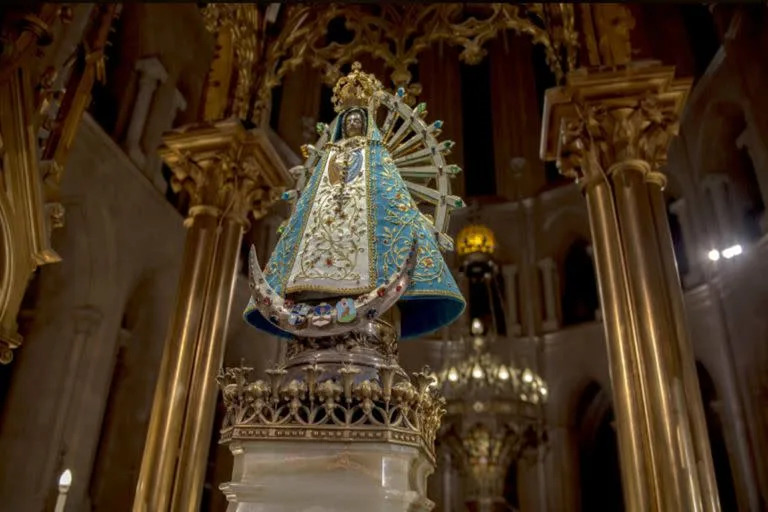Like every May 8 , today is the Day of the Virgin of Luján , the patron saint of Argentines. Its history begins in the year 1630, when a Portuguese landowner who lived in Santiago del Estero asked a compatriot to send him an image of the Immaculate Conception of Mary from Brazil.
The friend sent two images so that he could choose, but when they arrived at the port of Buenos Aires , from where they would leave for their final destination, one of the carts that carried them inexplicably stopped in Zelaya , Pilar district, province of Buenos Aires.
When trying to move the vehicle, the residents of the area wanted to know the contents of the drawers and found the image of the Virgin that was deposited on the banks of the Luján River .
The drivers assumed that the cart was not moving because of the load. They took out the weight, but the cart did not move . Then they extracted the drawer of the Virgin, and there they were able to advance . The action was repeated over and over again. When loading the virgin, the cart stopped. So, they came to the conclusion that the Virgin wanted to stay on that shore.
Thousands of people who pilgrimage to Luján are blessed after their arrival
It was then that the people took the image of the Virgin to the nearest ranch , where it was installed in a hermitage until a chapel was built.
The events took place in the area of Pilar , where there is still a ford of the Luján River known as Pasaje de la Virgen , located five leagues from the current Basilica.
In that provisional site, during the first years, the Virgin received very valuable gifts and offerings for the country people, such as cattle or sheep. This is the reason why she was called “La Virgen Gaucha”.
A neighbor promised to maintain her cult no matter what it might cost her and offered her land, located five leagues further, on the Luján River . Despite the initial resistance of the faithful, she accepted the proposal and that is where the Basilica was built.
The original image of the Virgin is 38 centimeters high , it is made of baked clay, representative of the Immaculate Conception.
The dress of the Virgin of Luján is changed every year. It consists of a white dress and a light blue cloak in the form of a poncho. It is embroidered by hand (Archdiocese of Mercedes-Luján/)
For three years, they have not only been making the costume for the original statue -which is later donated-, but also sewing and embroidering the dresses and cloaks worn by the replicas of all sizes that are sold in the sanctuary shop. The golden embroidery of threads, stones and beads is done by hand. They are not gold or expensive materials.
The dress and mantle of the Virgin of Luján changes every year. This makes sense: keeping clothes clean and neat as an act of love for Mary , mother of Jesus and of all Catholics. This change of costume is carried out in a special ceremony, officiated by a priest, in which the previous costume is removed from the image and the new one is placed on it.

